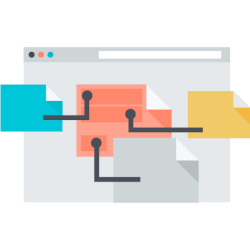Our web app development services are designed to deliver fast, secure, and scalable solutions that help your business run more efficiently. Whether you need a custom internal system, a customer-facing application, or a fully integrated online platform, we build powerful web applications tailored to your specific requirements.

A custom CMS gives you full control over your website content, allowing you to easily update pages, images, and documents without needing technical skills.

A tailored CRM system helps you manage customer interactions, sales pipelines, and business relationships more efficiently in one central platform.

A secure, user-friendly web portal streamlines access to information, tools, and services for staff, clients, or members through a single online interface.

A fully custom web application is built around your unique business processes, delivering the exact functionality you need to operate more effectively.
A great web application doesn't just look good, it works hard behind the scenes. We design and develop custom features that improve efficiency, support your processes, and enhance the user experience. From user authentication to data dashboards and automated workflows, we build smart functionality tailored to your exact needs.
Each feature is designed with performance, usability, and scalability in mind - ensuring your app is not only functional today, but ready to evolve as your business grows.
The database is the engine of your web application. We create scalable, secure, and high-performance database structures that support fast data processing, seamless user interactions, and long-term reliability. Whether you're handling user records, customer data, or complex business logic, we build robust back-end architecture to handle it all.
With best-practice security measures and clean data modelling, your application will be efficient, flexible, and protected from vulnerabilities - ready to support your business at any scale.
Design plays a crucial role in how users interact with your web application. Our design approach combines clean, modern aesthetics with intuitive interfaces that make your app easy to use and navigate. We focus on clarity, accessibility, and user engagement to create an interface that delivers a smooth and enjoyable experience across all devices.
Whether your app is for customers, staff, or both, we ensure the design supports your goals, builds trust, and keeps users coming back.
During development as well as before your web app goes live, it is thoroughly tested to ensure it performs exactly as expected. We run comprehensive checks covering functionality, performance, compatibility, responsiveness, and security. Our quality assurance processes enable us to deliver a polished product that users can trust.
We test across multiple browsers, devices, and user scenarios to make sure your app is robust, reliable, and ready for real-world use.
We don't just launch your web app - we stand behind it. Our ongoing support and maintenance services ensure your application continues to run smoothly, stays secure, and adapts to your evolving business needs. Whether you need technical assistance, feature updates, or performance monitoring, we're here to help.
With proactive support, regular updates, and prompt issue resolution, you can have confidence that your web app is in expert hands long after launch.